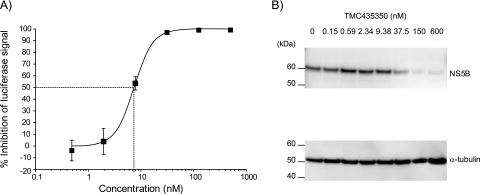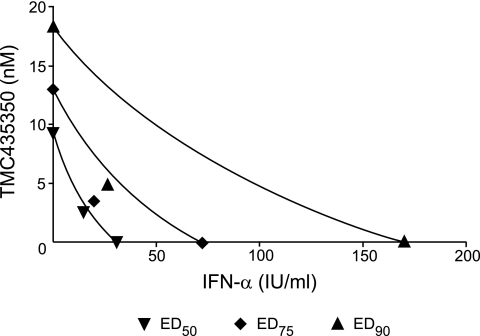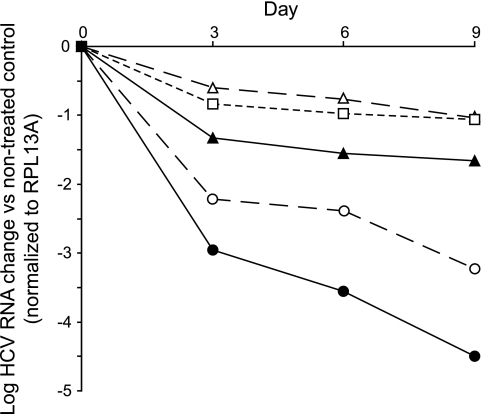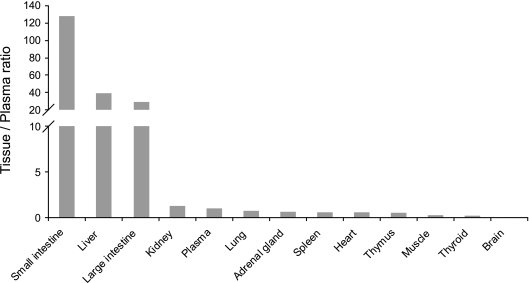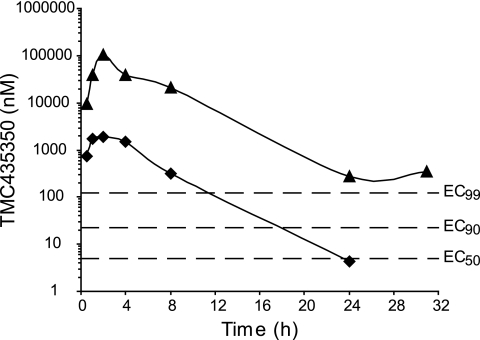This product is for research use only, not for human use. We do not sell to patients.
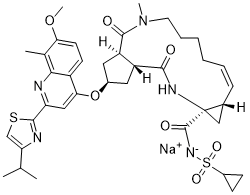
| Size | Price | Stock |
|---|---|---|
| 250mg | $450 | To Be Confirmed |
| 500mg | $750 | To Be Confirmed |
| 1g | $1125 | To Be Confirmed |
Cat #: V3155 CAS #: 1241946-89-3 Purity ≥ 98%
Description: Simeprevir sodium, the sodium salt of simeprevir (previously known as TMC43), is a competitive, reversible, macrocyclic, noncovalent inhibitor of the hepatitis C virus (HCV) NS3/4A protease. It acts directly against the hepatitis C virus and has been approved by the US FDA for use in combination with peginterferon-alfa and ribavirin to treat hepatitis C and hepatitis B. Simeprevir has also received approval in Japan for the treatment of chronic hepatitis C infection, genotype 1. It has a medium inhibitory concentration with IC50<13 nM for all HCV NS3/4A enzymes (genotypes 1a, 1b, 2, 4, 5, and 6), but has an IC50 value of 37 nM for genotype 3.
Publications Citing InvivoChem Products
Product Promise

- Physicochemical and Storage Information
- Protocol
- Related Biological Data
- Stock Solution Preparation
- Quality Control Documentation
| Molecular Weight (MW) | 771.92 |
|---|---|
| Molecular Formula | C38H46N5O7NaS2 |
| CAS No. | 1241946-89-3 |
| Storage | -20℃ for 3 years in powder formr |
| -80℃ for 2 years in solvent | |
| Solubility In Vitro | DMSO: >100 mg/mL (133.3 mM)r |
| Water: N/Ar | |
| Ethanol: N/A | |
| Solubility In Vivo | N/A |
| SMILES Code | O=C([N-]S(=O)(C1CC1)=O)[C@]23NC([C@@](C[C@@H](OC4=CC(C5=NC(C(C)C)=CS5)=NC6=C(C)C(OC) =CC=C46)C7)([H])[C@]7([H])C(N(C)CCCC/C=C[C@]2([H])C3)=O)=O.[Na+] |
| Synonyms | TMC-435; TMC 435; TMC435; TMC-435350; Olysio |
| Protocol | In Vitro | In vitro activity: the antiviral activity of simeprevir (TMC435350) in Huh7-Luc cells is dose dependent, and the EC50 and EC90 values determined for TMC435350 are 8 nM and 24 nM, respectively. Inhibition of TMC435350 on NS3/4A protease is time dependent, and the overall Kis are estimated to be 0.5 nM for genotype 1a and 0.4 nM for genotype 1b, respectively. TMC435350 is a potent inhibitor of HCV NS3/4A protease (Ki=0.36 nM) and viral replication (replicon EC50=7.8 nM). Kinase Assay: the in vitro inhibitory activity of simeprevir against NS3/4A is determined using a fluorescence resonance energy transfer cleavage assay with the RetS1 peptide substrate, derived from the genotype 1a NS4A-4B junction, and bacterially expressed full-length NS3 protease domain, supplemented with an NS4A peptide. Briefly, NS3/4A is preincubated in the presence of TMC435350 for 10 min, and then the RetS1 substrate is added and fluorescence is continuously measured for 20 min (excitation, 355 nm; emission, 500 nm). Cleavage of the substrate is expressed as a percentage of the cleavage seen with the vehicle control. Cell Assay: Huh7-Luc cells are seeded at a density of 2,500 cells/well in a 384-well plate in Dulbecco's modified Eagle's medium plus 10% fetal calf serum and incubated with a range of concentrations of serially diluted simeprevir (TMC435350), in a final DMSO concentration of 0.5% in the absence of G418. After 72 h of incubation, Steady Lite reagent is added in a 1:1 ratio to the medium, and luciferase signal is measured using a ViewLux reader. |
|---|---|---|
| In Vivo | In rats, TMC435350 (40 mg/kg, p.o.) is extensively distributed to the liver and intestinal tract (tissue/plasma area under the concentration-time curve ratios of >35), and the absolute bioavailability is 44%. | |
| Animal model | 24 male specific-pathogen-free Sprague-Dawley rats, weighing between 200 and 300 g at the time of dosing, are divided into eight groups of three rats each. | |
| Dosages | 3 mg/kg | |
| Administration | PO; single dosage |
| Solvent volume to be added | Mass (the weight of a compound) | |||
|---|---|---|---|---|
| Mother liquor concentration | 1mg | 5mg | 10mg | 20mg |
| 1mM | 1.2955 mL | 6.4774 mL | 12.9547 mL | 25.9094 mL |
| 5mM | 0.2591 mL | 1.2955 mL | 2.5909 mL | 5.1819 mL |
| 10mM | 0.1295 mL | 0.6477 mL | 1.2955 mL | 2.5909 mL |
| 20mM | 0.0648 mL | 0.3239 mL | 0.6477 mL | 1.2955 mL |
This equation is commonly abbreviated as: C1 V1 = C2 V2
- (1) Please be sure that the solution is clear before the addition of next solvent. Dissolution methods like vortex, ultrasound or warming and heat may be used to aid dissolving.
- (2) Be sure to add the solvent(s) in order.





































